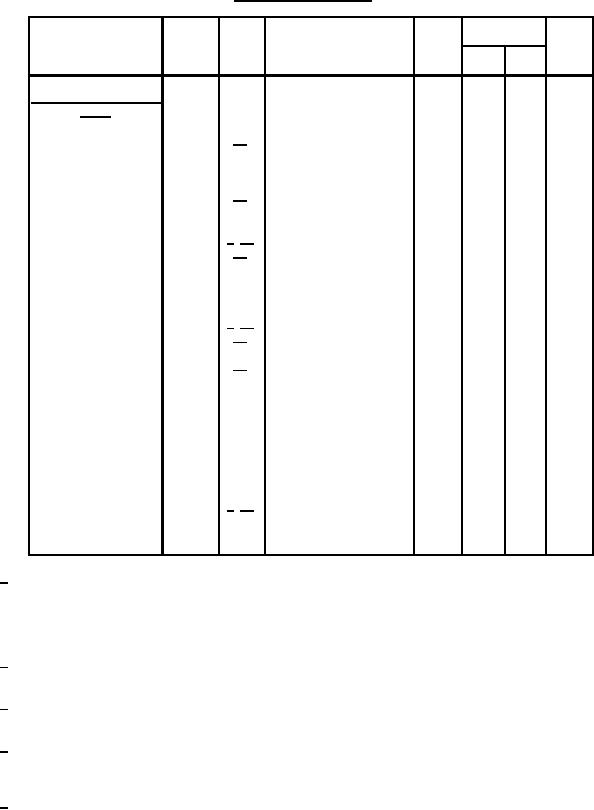
MIL-PRF-1/1717C
TABLE I. Testing and inspection - Continued.
Inspection
Method
Notes
Conditions
Symbol
Limits
Unit
Min
Max
Conformance inspection,
part 3
---
---
---
---
Group C;
16/
Ef = 6.0 V;
---
Life test
filament standby;
t = 500 hours
---
25
%
Life-test end point
---
16/
Ćib
---
0.15
pF
ĆCgp
Variable-frequency
---
9/ 11/ F = 55 to 500 to 55 Hz;
Ep
---
250
mV ac
vibration
14/ Accel = 10 G peak (min);
Ebb = 300 V dc;
Rp = 10,000 ohms;
Ec/Ib = 10 mA dc
Torque
---
9/ 11/ No voltages applied
---
---
---
---
15/
Shock, specified pulse
1042
11/
Condition A;
---
---
---
---
no voltage applied;
fixture in accordance with
Drawing 280-JAN
---
Torque and shock-test
end point:
Total grid current
1266
---
Ic
---
-10
µA dc
---
---
---
---
8/ 11/ Pressure = 35 mmHg (max);
1002
Barometric pressure,
voltage = 2,000
reduced
V ac; TA = 30°C ± 10°C
1/ The transmit-time heating effect of the cathode shall be compensated for by a reduction in heater voltage after
dynamic operation of the tube has started. The back heating is a function of frequency, grid current, grid bias, anode
current, duty cycle, and circuit design and adjustment. There is an optimum heater voltage which will maintain the
cathode at the correct operating temperature for a particular set of operating conditions. A maximum variation of ± 5
percent from optimum is permitted. No reduction in heater voltage is required up to and including 500 MHz.
2/ The regulation, or series anode supply impedance, or both, shall limit the instantaneous peak current, with the tube
considered as a short circuit, to a maximum of 10 times the specified maximum current rating.
3/ The maximum instantaneous peak grid voltage for grid-pulse conditions shall be within the range of
+250 to -750 volts.
4/ Sufficient conduction and convection cooling shall be provided to limit the envelope and anode shank temperatures to
the specified maximum value under all operating conditions. Reliability will be seriously impaired if this maximum is
exceeded. W here emphasis is placed on long and reliable life, lower temperatures should be maintained.
5/ Sufficient cooling shall be provided for all seals to limit temperature in accordance with 4/. In cases where long life
and consistent performance are factors, cooling in excess of minimum requirements is normally beneficial.
3
For Parts Inquires call Parts Hangar, Inc (727) 493-0744
© Copyright 2015 Integrated Publishing, Inc.
A Service Disabled Veteran Owned Small Business